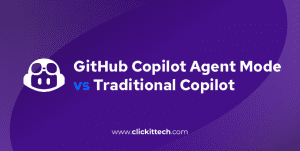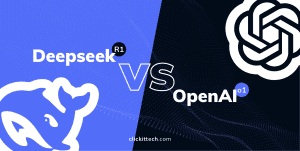Hugging Face vs LangChain is a debate changing the game in NLP, but which one is the right fit for your next project?
Hugging Face began as a chatbot project but shifted gears to focus on NLP tools and models. LangChain, on the other hand, was designed from the ground up to make working with language models simpler and more efficient, especially when connecting them with other systems.
What Makes Hugging Face Stand Out?
Hugging Face is a powerhouse for text classification, sentiment analysis, and machine translation tasks. Some of its key features are:
- Model Hub
Hugging Face is a treasure trove of pre-trained models for summarization, translation, and classification tasks. Architectures like BERT, GPT, and others are ready to use, saving time and effort. - Inference API
With Hugging Face, you can quickly integrate NLP features like sentiment analysis or text generation into your app via a simple REST API. There is no need for complex setups or heavy hardware. - Transformers Library
Last but not least, you can build or customize models with just a few lines of Python. Tools for tokenizing, training, and eval make it a favorite for developers.
Hugging Face is frequently used in various NLP applications because of its advanced features and pre-trained models. Let’s talk about some of its everyday use cases.
- Text Classification & Sentiment Analysis: Businesses can categorize customer reviews or sort support tickets effortlessly.
- Machine Translation: Hugging Face also breaks language barriers with multilingual support using models like MarianMT.
- Chatbots: Hugging Face APIs helps developers quickly deploy models like DialoGPT and enables them to create conversational agents for customer support or personal assistants.
Need expert AI development services? Our team can help you build robust NLP solutions tailored to your needs! Contact us
What Makes LangChain Stand Out?
LangChain connects language models to build more complex, chain-of-thought workflows and retrieval-augmented generation systems. Here are its top features:
- Prompt Engineering Framework
LangChain provides tools for managing prompts to guide models through multi-step reasoning or complex instructions, which are ideal for contextual and dynamic tasks. - External Data Integration
Next, LangChain supports integration with live APIs, databases, or real-time documents. For example, a virtual assistant can pull user-specific details or financial data in real-time. - Pluggable Components
Lastly, LangChain is built with modular components that can be replaced or customized based on specific needs. You can customize key components like memory systems, model interfaces, and output formats without overhauling your system.
Let’s see how Langchain is capable of workflow patterns like:
- Retrieval-Augmented Generation: LangChain is often used in systems that combine language models with external knowledge. The model pulls data from external sources to make responses more accurate.
- Interactive Content Generation: LangChain is also a good choice for building systems that generate interactive content, such as dynamic stories, quizzes, or reports tailored to user input.
- Agents: Finally, LangChain also supports the creation of agents that can carry out tasks automatically. With intelligent agents, you can automate tasks like scheduling meetings or sending emails.
Can Hugging Face and LangChain Work Together?
Absolutely! Hugging Face and LangChain complement each other perfectly. We can develop a nice AI system using Hugging Face for tasks like sentiment analysis or translation, while LangChain handles complex workflows and connects to external systems.
For example, a Hugging Face model in a chatbot application can handle natural language understanding, while LangChain can query a database to retrieve the most relevant information for a response.
How to Choose between Hugging Face vs LangChain?
However, if you prefer to choose only one, your choice between Hugging Face and LangChain depends on the needs of your NLP application.
- Go with Hugging Face if you need pre-trained models and straightforward NLP tasks.
- Choose LangChain if your project involves complex workflows, multiple tools, or external integrations.
- Or, use both for advanced applications that combine NLP processing with external data and multi-step tasks.
Let’s quickly go over the key points we discussed in this video.
- Hugging Face excels at simplifying NLP with pre-trained models and APIs.
- While LangChain shines when you need workflows that integrate language models with external systems.
- Together, they’re a powerhouse for building advanced, effective NLP applications.
Hugging Face or LangChain? ClickIT’s got you covered! Book a Free Call









